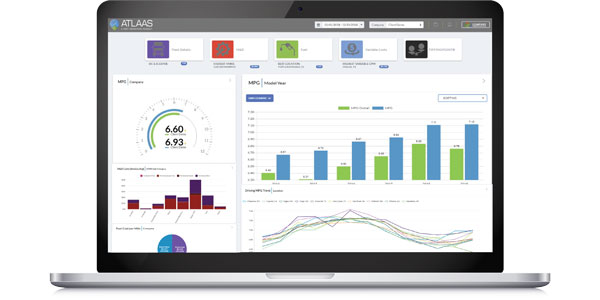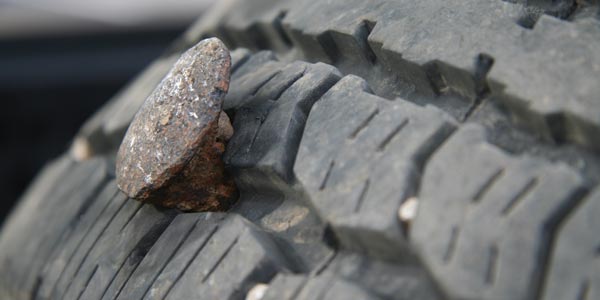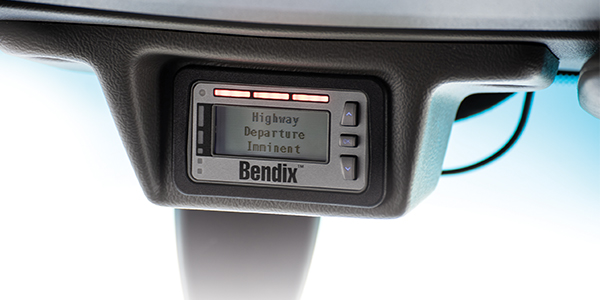“Fleets that have experienced problems with short-lived batteries would do well to rethink their choice of alternators,” says Everett Seymoure, global manager for TRP Aftermarket Parts. “We recommend that fleets take a closer look at the components drawing power from the truck’s electrical system because we’ve found that when truck operators experience lower than expected battery life, they’re usually using alternators with inadequate amp output.”
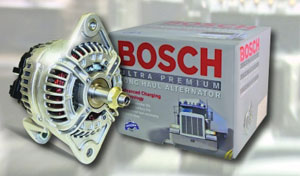
As recently as a few years ago, an alternator with an output of 130 amps at 12 volts would probably serve the needs of most regional and vocational truck fleets. To handle higher hotel loads, long-haul fleets might need an alternator with a slightly higher output of up to 140-150 amps at 12 volts. Several things have changed, though, leading to the need to rethink the right alternator output.
For example, anti-idling restrictions and the use of more electronic devices in trucks have meant greater loads are placed on batteries and the alternators that keep them operational. “Emissions control systems on newer engines, especially SCR technology engines that meet 2010 EPA emission standards, also draw more power from electrical systems for passive and active regeneration cycles,” Seymoure adds. “In addition, engines using SCR or EGR technology run at higher temperatures, which can wreak havoc on alternators not rated for those higher temperatures.
“Tighter tolerances and extremely high-pressure fuel injection system mechanisms can also tax starters and, by extension, batteries,” Seymoure continues. Also, since many state and local jurisdictions now restrict idling to as little as five minutes or less at a time, drivers must turn off and restart their engines up to 20 or 30 times a day or more, placing even more strain on the truck’s batteries.”
“Many trucks spend 30% to 40% of their operating time at idle speed,” says Fred Padgett at Robert Bosch. “Most alternators provide only 30% to 40% of their rated output under these conditions and the batteries must provide what the alternator cannot. This drains the batteries significantly, requiring them to be recharged by the alternator.”
This deep draining/recharging process constitutes a deep cycle for the battery, Padgett points out, which can drastically reduce battery life. An alternator that provides significantly higher output at idle means batteries are not drained as much, deep cycling of the batteries is reduced and battery life is extended.
“Conventional alternators can also experience a significant performance drop under high temperature conditions,” Padgett adds. “This decreases output over the whole RPM range and leads to a lower charging level of the batteries that can eventually damage them. An alternator with less performance drop results in a higher charging level of the batteries under hot temperatures, even when the two different alternators are rated at the same nominal output.”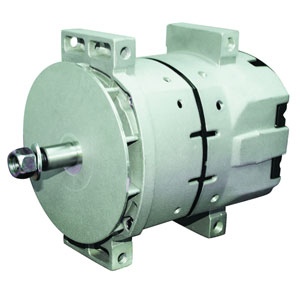
Understanding choices
Effectively spec’ing alternators should start with an understanding of the two main types of alternators—brush or brushless. “In general,” TRP’s Seymoure says, “a brush alternator is less expensive but a brushless alternator lasts much longer, generates a more consistent amp output and operates at a lower temperature.
“In a brush alternator, the current that’s generated with the alternator’s rotating magnetic core and stator is carried away through tiny bristles, which can eventually wear out,” Seymoure explains further. “A brushless alternator is actually composed of two alternators, including the main alternator and the exciter mounted end-to-end on one rotor. Electricity in these alternators is generated by moving a coil through a magnetic field. As it moves through the field, the coils are charged with protons and electrons and as these molecules collect, electrical current is generated and the electrons are sent through the coil and into the wires of the alternator.”
Some alternators are also available with remote sensing, a capability of measuring not only the power the alternator produces for the truck’s electrical system, but also the power being delivered to each of the batteries. “Accurate voltage readings can help compensate for cable voltage drop,” Seymoure states, “and further extend the service life of the truck’s batteries.”
| Alternator and Battery Resources |
| AC Delco www.acdelco.com Alliance Parts www.alliancebrandparts.com Denso www.densoheavyduty.com Exide Technologies www.exide.com Interstate Batteries www.interstatebatteries.com Mitsubishi Electric www.meaa-mea.com Odyssey Battery www.odysseybattery.com Prestolite/Leece-Neville www.prestolite.com Robert Bosch rb-kwin.bosch.com/us Trojan Battery Co. www.trojanbattery.com TRP Parts www.trpparts.com |
In practice, a remote sensor at the battery terminals can measure how much electricity is actually being delivered. If the sensor reads a power drop at the battery terminal compared to the power the alternator is generating, the alternator automatically increases its output until the battery has reached its specified charge.
Calculating loads
The process of choosing the right size alternator should begin with a calculation of the electrical load or amp-hours per working shift and rest period.
“Make note of all electrical components,” Seymoure advises, “including the emissions control system, gauges, air conditioner, headlights, tail lights, cab marker lights, fog lights and van or trailer lights, and the amps each of them draws respectively during the working and rest period. Then multiply each of those amps by the number of hours the components operate in their respective working or rest period to determine their electrical loads or amp-hours.”
Add up all of the electrical loads and then calculate a reserve for battery charging by multiplying that total by 20%. “When you add the total electrical load and reserve together, you determine the minimum amount of output the alternator should produce,” Seymoure noted.
Addressing challenges
Fleets today are facing new challenges when it comes to supplying ample power for batteries and truck electrical systems. “There are regulations and mandated technologies that are increasing the load placed on electrical components. Additionally, cab comfort systems and electronic devices that make the truck a more agreeable and productive work environment are increasingly essential for driver recruitment and retention.
“All of these things tax batteries and alternators to their limits,” Seymoure states. “That’s why today’s truck fleets need properly specified alternators to ensure they don’t shortchange themselves in capacity and shorten the lives of batteries.”
TRP Aftermarket Parts for trucks, trailers and buses are available through a network of authorized retailers that include Kenworth and Peterbilt dealerships. TRP offers the RE022 brush series of alternators rated at 150 amps and the RE 555 brush series that provides 160 amps. TRP also offers the RE035 and RE036 series of brushless alternators rated at 140 amps and 170 amps, respectively. The company’s line of brushless alternators also features remote sensing capability.
Considerations for battery replacements – by D. Michael Pennington
“Most companies offer proprietary batteries, which are really manufactured by the big three battery companies,” said Peter Nativo, vice president of maintenance, Transport Service Co., who directs the fleet on a three-year replacement policy. “We replace all three batteries on the tractor every three years during its preventive maintenance service.
“Be sure to look for a good CCA (cold cranking AMP) of 950 to 1,000 so it will work well in all types of weather throughout the country and into Canada. Also be certain to examine the warranty and how easy it is to work with, since all battery vendors will sell you a battery with a three- or five-year warranty, but getting someone to take them back and credit you is where the issues come in,” he noted.
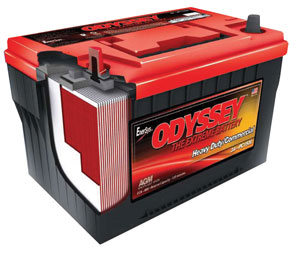
Transport Service prefers to purchase its batteries from a parts vendor or truck manufacturer as a national account, “so when it’s time for warranty adjustments, I know they will process my claim and get me replacement product or credit,” added Nativo.
Bob Hamilton, director of fleet maintenance for Bozzuto’s Inc., based in Cheshire, Conn., made this suggestion: “Most individuals want to over-spec the batteries. This practice is costly and unnecessary. It can also lend itself to premature failure.”
Kalyan Jana, development support manager—Specialty Markets, Odyssey Battery, offered the following suggestion to fleet equipment managers: “Broadly speaking, cost of ownership should be the main consideration for the fleet manager as he or she plans battery replacement for the entire fleet. That cost of ownership should include not only the direct costs (battery purchase price), but also the opportunity or indirect costs associated with factors such as vehicle downtime and replacement of ancillary items like battery cables and trays.”
“Look at the total cost of ownership, not just low cost,” suggested Brad Bisaillon, North American sales. When replacing batteries, fleet managers should understand the vehicle’s load, seek a longer warranty than 12 to 18 months, and look for national support rather than regional.
“Technology in batteries is changing fast. Just take the time to look at the new AGM type versus the normal maintenance-free batteries. They have better charge retention, more reserve capacity, and help fleets meet cranking power requirements plus hotel load usage,” he added.











